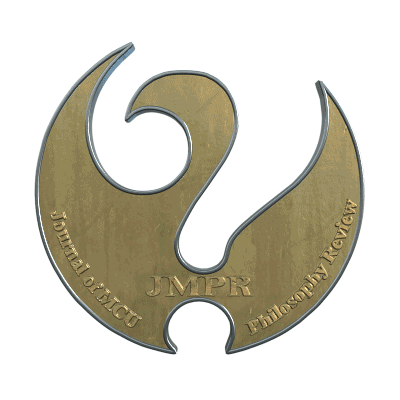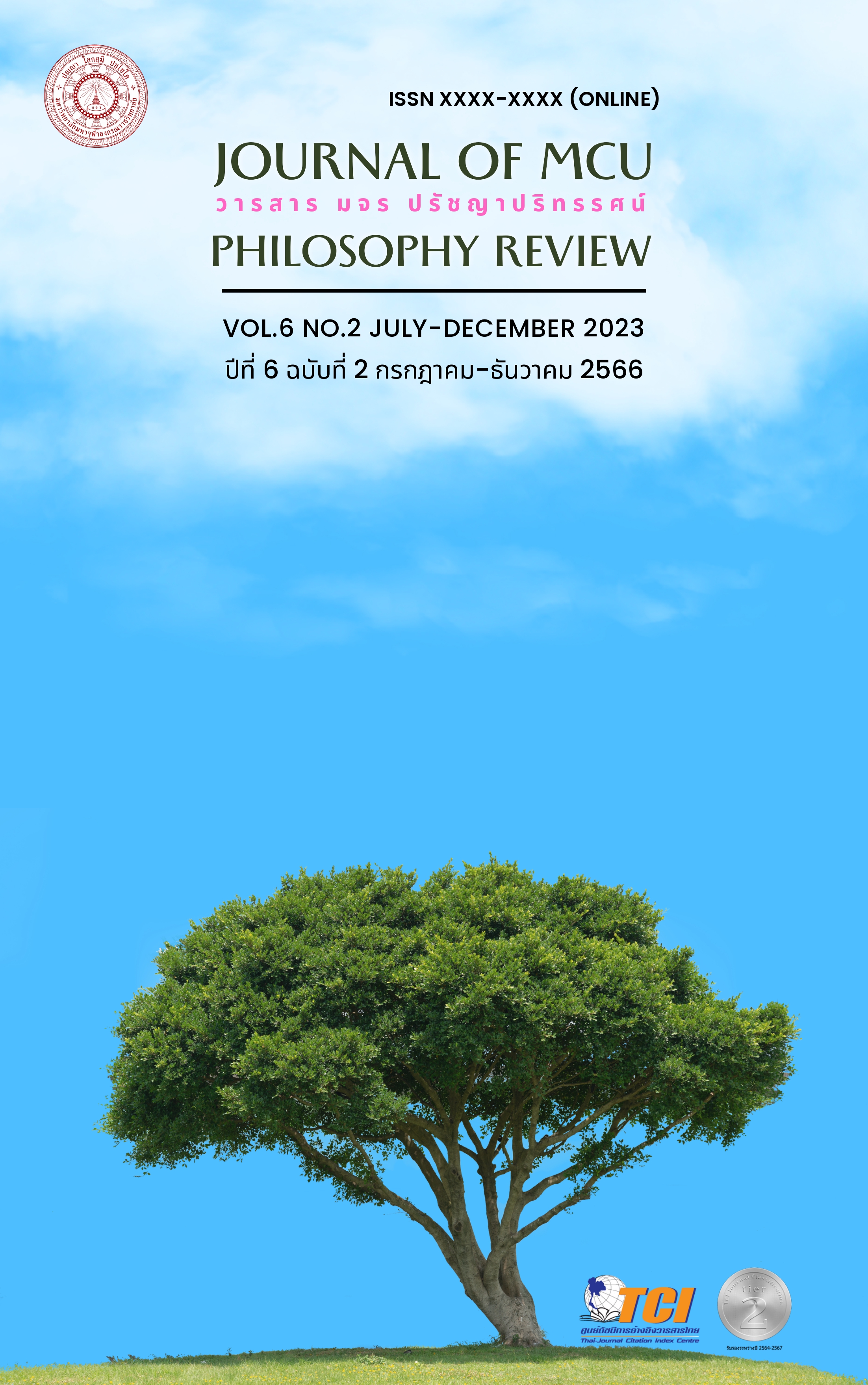วิพากษ์ข้อถกเถียงเรื่องพระเทวทัตในฐานะคู่ปรับพระพุทธเจ้าในคัมภีร์พระพุทธศาสนาเถรวาทและมหายาน
Main Article Content
บทคัดย่อ
บทความวิจัยนี้มีวัตถุประสงค์ 1) เพื่อสำรวจข้อถกเถียงเรื่องพระเทวทัตในฐานะคู่ปรับพระพุทธเจ้าในคัมภีร์พระพุทธศาสนาเถรวาทและมหายาน 2) เพื่อวิเคราะห์บริบทข้อถกเถียงเรื่องพระเทวทัตในฐานะคู่ปรับพระพุทธเจ้าในคัมภีร์พระพุทธศาสนาเถรวาทและมหายาน และ 3) เพื่อวิพากษ์ข้อถกเถียงเรื่องพระเทวทัตในฐานะคู่ปรับพระพุทธเจ้าในคัมภีร์พระพุทธศาสนาเถรวาทและมหายาน การวิจัยครั้งนี้เป็นการวิจัยเชิงคุณภาพ ด้วยการวิจัยทางด้านเอกสาร จากแหล่งข้อมูล คือ พระไตรปิฎก อรรถกถา และคัมภีร์ชั้นรองของพระพุทธศาสนาฝ่ายเถรวาทและมหายาน ผลการวิจัยพบว่า คัมภีร์เถรวาทและนิกายที่แตกออกมาจากเถรวาท คือ ธัมมคุตติกะ มหิสาสกะ สัพพัตถิกวาทะ และมูลสัพพัตถิกวาทะ ปรากฏประวัติพระเทวทัตในตำนานหลักประมาณ 15 เรื่อง คัมภีร์ฝ่ายมหายาน ได้แก่ มหาสังฆิกวินัย-วิภังค์ ลลิตวิสตระ พุทธจริต มหาวัสตุอวทานมี 2-4 เรื่องเท่านั้น ส่วนสัทธรรมบุณฑริกสูตรไม่มีกล่าวไว้ การตีความเรื่องพระเทวทัตมี 2 แบบคือ การตีความตามตัวบททางคัมภีร์และการตีความแบบฆราวาสวิสัย เมื่อการตีความตามตัวบทมีข้อจำกัดจึงจำเป็นต้องใช้การตีความแบบหลังซึ่งทำให้ทราบว่าเรื่องพระเทวทัตกระทำสังฆเภทมีจุดเริ่มต้นจากวัตถุ 5 ประการ พระเทวทัตมิได้เป็นคนบาปดังที่เข้าใจกันแต่เป็นเพียงภิกษุที่เคร่งครัดในธุดงควัตร การพัฒนาทางเศรษฐกิจและสังคมกำลังมีอิทธิพลต่อข้อวัตรของคณะสงฆ์ พระเทวทัตกังวลเรื่องการเปลี่ยนแปลงจึงข้อวัตรที่เคร่งครัด แต่เมื่อข้อเสนอไม่ผ่านการเห็นชอบส่งผลให้พระเทวทัตและพวกแยกคณะของตน ผู้บันทึกคัมภีร์มีความจำเป็นต้องบันทึกคัมภีร์เพื่อมิให้ภิกษุอื่นนำพระเทวทัตมาเป็นต้นแบบ
Article Details

อนุญาตภายใต้เงื่อนไข Creative Commons Attribution-NonCommercial-NoDerivatives 4.0 International License.
บทความที่ได้รับการตีพิมพ์เป็นลิขสิทธิ์ของวารสาร มจร ปรัชญาปริทรรศน์
ข้อความในบทความที่ได้รับการตีพิมพ์ในวารสาร ถือเป็นความรับผิดชอบของผู้เขียนบทความ และข้อคิดเห็นนั้นไม่ถือว่าเป็นทัศนะและความรับผิดชอบของกองบรรณาธิการวารสาร มจร ปรัชญาปริทรรศน์
เอกสารอ้างอิง
ฉัตรสุมาลย์ กบิลสิงห์ (แปล). สัทธรรมปุณฑรีกสูตร. พิมพ์ครั้งที่ ๕. กรุงเทพมหานคร: ศูนย์ไทย-ธิเบต, ๒๕๔๓.
มหาจุฬาลงกรณราชวิทยาลัย. (2539). พระไตรปิฎกภาษาไทย ฉบับมหาจุฬาฉบับมหาจุฬาลงกรณราชวิทยาลัย. กรุงเทพฯ : โรงพิมพ์มหาจุฬาลงกรณราชวิทยาลัย.
มหาจุฬาลงกรณราชวิทยาลัย. (2556). อรรถกถา ฉบับมหาจุฬาลงกรณราชวิทยาลัย. กรุงเทพฯ : โรงพิมพ์มหาจุฬาลงกรณราชวิทยาลัย.
มหาจุฬาลงกรณราชวิทยาลัย. (2540) มิลินทปัญหาปกรณ์ ฉบับมหาจุฬาลงกรณราชวิทยาลัย. กรุงเทพมหานคร: โรงพิมพ์วิญญาณ.
พระพรหมคุณาภรณ์ (ป.อ. ปยุตฺโต). (2556). พจนานุกรมพุทธศาสตร์ ฉบับประมวลธรรม. พิมพ์ครั้งที่ 25. กรุงเทพมหานคร: สำนักพิมพ์ผลิธัมม์, 2556.
พระมหาไกรวรรณ ชินทตฺติโย (ปุณขันธ์). (2546). การศึกษาวิเคราะห์บทบาทของพระเทวทัตที่ปรากฏในคัมภีร์พระพุทธศาสนา. วิทยานิพนธ์พุทธศาสตรมหาบัณฑิต สาขาวิชาพระพุทธศาสนา. บัณฑิตวิทยาลัย : มหาวิทยาลัยมหาจุฬาลงกรณราชวิทยาลัย.
สิริ เพ็ชรไชย (แปล). (2542). พระคัมภีร์สารัตถทีปนี (แปล) ภาค 4. กรุงเทพฯ : หจก. ทิพยวิสุทธิ์.
สำเนียง เลื่อมใส (แปล). (2553). มหาวัสตุอวทาน เล่มที่ 1. นนทบุรี: นิติธรรมการพิมพ์.
Bareau, A. (1997). Devadatta and the first schism. Buddhist Studies Review, 14(1), 35.
CBETA 數位研究平台. (1988). พระมหาปิฎกไทโช. [Online]. Source: https://tripitaka.cbeta.org/ [3 March 2024]
Dutt, N. (1978). Buddhist Sects in India, second ed. Delhi: Motilal Banarsidass.
Deeg, M. (1999). The Sangha of Devadatta: Fiction and History of a Heresy in the Buddhist Tradition. Journal of the International College for Advanced Buddhist Studies. 2, 187.
Jones, J.J. (1952). The Mahāvastu translated from the Buddhist Sanskrit Volume II. London: Luzac and Company.
Kubo, T., Yuyama, A., tr. (2007). The Lotus Sutra (Taisho Volume 9 Number 262), second ed. Berkeley: Numata Center for Buddhist Translation and Research.
Mitra, R., tr. (1881). The Lalita-Vistara. Calcutta: Asiatic Society of Bengal.
Mukherjee, B. (1966). Die Überlieferung von Devadatta dem Widersacher des Buddha in den Kanonischen Schriften. Munich: Kitzinger.
Ray, R.A. (1999). Buddhist Saints in India, (Revised ed). Oxford: Oxford University Press.
Willemen, C., tr. (2009). Buddhacarita: In Praise of Buddha's Acts. Berkeley: Numata Center for Buddhist Translation and Research.


